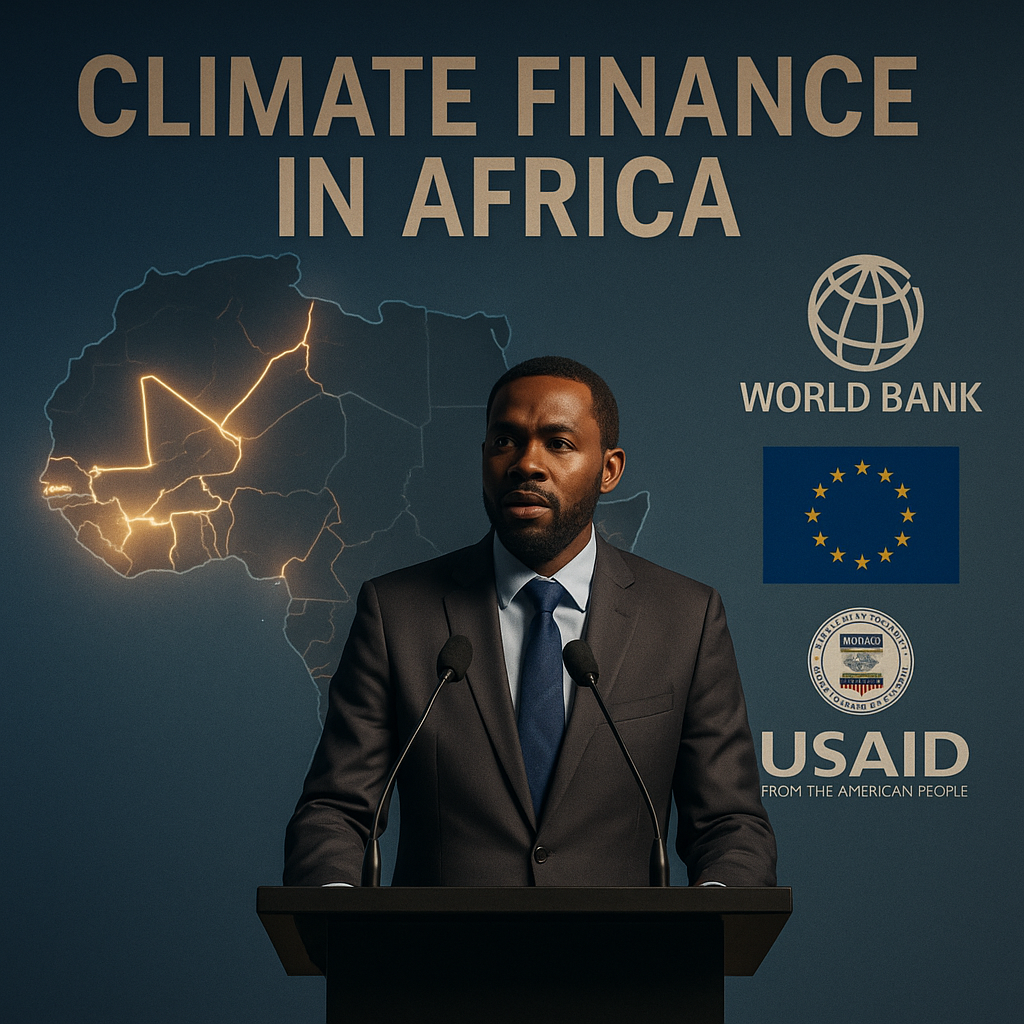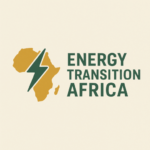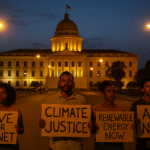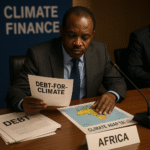Billions are pledged. But who decides who gets them, and on whose terms?
Across Africa, the energy transition has become more than a technical debate. It’s a question of power, politics, and people. While donor pledges multiply and climate summits echo with promises, the flow of actual finance remains tightly controlled-governed not just by numbers, but by institutions, ideologies, and deeply entrenched systems.
From cobalt mines in the DRC to solar ambitions in Senegal, Africa’s role in the global clean energy shift is undeniable. Yet the very funding mechanisms meant to support this shift often reinforce historical imbalances, raising difficult questions about fairness, access, and accountability.
Green Finance: The Promise and the Problem
In principle, green finance should offer hope. It represents the global community’s commitment to invest in renewable energy, clean transport, sustainable agriculture, and resilience. Major institutions-including the World Bank, International Monetary Fund (IMF), African Development Bank (AfDB), and bilateral donors-hold the keys to these climate-linked capital flows.
But the lived experience in many African capitals tells another story. Accessing green finance is often compared to passing through a labyrinth-where the paperwork is overwhelming, conditions are rigid, and decision-making happens thousands of miles away. The language of opportunity quickly becomes one of exclusion.
The Gatekeepers at the Centre
At the heart of the challenge lies control. Multilateral development banks and climate finance institutions act not just as financiers, but as gatekeepers. They decide who qualifies, how funding is structured, and under what terms it will be delivered.
Take South Africa’s $8.5 billion Just Energy Transition Partnership (JETP), launched at COP26 in Glasgow. While it was celebrated globally as a breakthrough, much of the money arrived as loans, not grants, and with a predefined agenda shaped largely by donor countries. Many local civil society actors only learned the details after the ink had dried.
In other cases, ministries must align domestic plans with donor expectations to even qualify for support. What should be a sovereign development agenda becomes a negotiation.
Sovereignty at a Cost
This control extends to policy. Green finance often comes with strings attached-market liberalisation, subsidy reforms, and private-sector procurement models. These policies are not inherently bad, but they can sideline public utilities and marginalise local industries.
Kenya’s experience illustrates this tension. Over the past decade, clean energy investments in the country have increasingly relied on private Independent Power Producers (IPPs). While this boosted generation capacity, it also introduced high tariffs that burden consumers, prompting backlash from civil society and parliament alike.
When global climate funds demand that countries reform before they can receive support, it risks undermining national ownership. African countries are left to weigh urgent needs against distant conditions.
The Uneven Cost of Capital
Another silent barrier is the pricing of finance itself. African countries routinely pay interest rates far higher than their European or Asian counterparts for similar projects with comparable risk.
The African Climate Foundation reports that renewable energy projects in Africa face borrowing costs up to ten times higher than those in the Global North. This disparity stems less from project risk and more from systemic bias in global credit assessments.
Put simply: the cost of being African is baked into the price tag.
A Missing Piece: Civil Society and Local Leadership
If governments face hurdles, civil society organisations are often locked out altogether. Local NGOs, youth groups, women-led climate movements, and grassroots innovators rarely have the administrative capacity or insider networks to access formal climate finance.
Philanthropic support is limited. In 2022, less than 4% of global climate philanthropy reached Africa-and only a small fraction of that went to African-led organisations.
This gap is not just a funding issue-it is a justice issue. These are the groups closest to the people most affected by floods, droughts, and displacement. Yet their voices are least heard in boardrooms where funding flows are decided.
Fixing the Pipeline
There is no shortage of finance in the global climate system. The real bottleneck is how finance is governed. To unlock green finance for Africa, reforms must go beyond technical tweaks. They must address structural inequities.
Here’s what that could look like:
- Shift from loans to grants for the most vulnerable and low-income countries.
- Support direct access modalities, local institutions, and communities don’t need intermediaries to reach funding.
- Back African financial intermediaries who understand local contexts and can de-risk smaller projects.
- Reform risk assessment frameworks to better reflect project merit rather than geographic bias.
- Establish transparency obligations on funders-disclosing who is getting the money, and who is consistently left behind.
Towards a People-Centred Transition
Green finance cannot be a black box. If the energy transition is to be just, it must be transparent, inclusive, and accountable. Africans must not only be recipients of climate finance, they must shape how it is designed, where it flows, and what it funds.
The stakes are high. The choices made now will determine whether Africa’s energy future is built in service of its people or around the preferences of distant lenders.
Conclusion: It’s Not Just About the Money
As billions flow or stall-Africa must ask harder questions. Who sets the priorities? Who bears the risk? Who owns the outcomes?
Without answers that centre African voices, the continent risks entering the clean energy era shackled to the same inequities that defined the fossil one.
The energy transition is about more than megawatts. It is about dignity, self-determination, and justice. And it begins with asking-not just who funds Africa’s transition-but who decides what that transition looks like.



